What is the difference between cherry plum and plum?
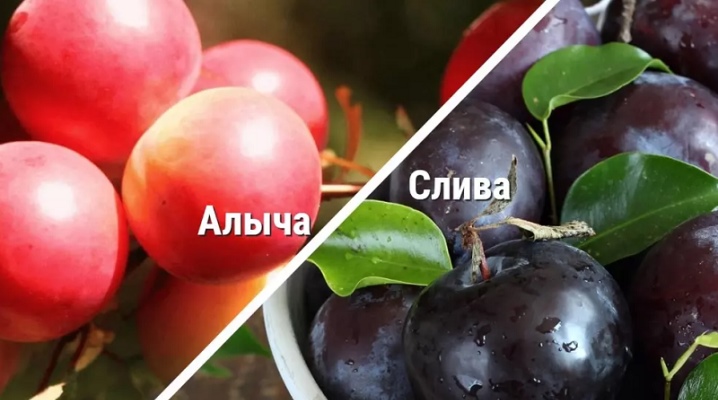
If someone believes that cherry plum and plum are one and the same tree, and the fruits only differ in color, this is a wrong belief. From the article you will find out how these fruits differ, what nutritional value each of them has. We will also tell you when these fruits ripen, and which of the trees is still better to have on your site.
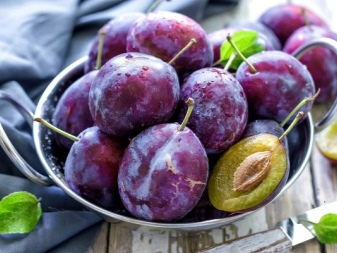
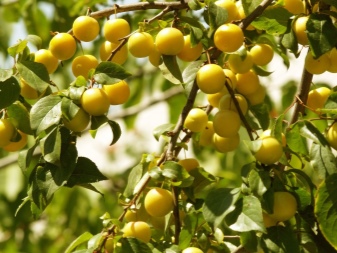
What is the difference in appearance?
Even outwardly, there is no way to confuse cherry plum with plum. The difference is, first of all, in the shape of the fruit: the cherry plum is smaller and round, sometimes flattened (depending on the variety), yellow (sometimes reddish) in color. And the plum tree gives a larger oblong fruit. Plum comes in a variety of colors (mostly blue and purple). This is an elastic fruit with a dense skin, juicy pulp, from which the stone leaves well. From the cherry plum, the bone does not just move away, it "holds" to the watery pulp.
Cherry plum fruit is almost half the size of plum: thus, a large variety of plum gives fruit weighing 70 g, while the maximum weight of one cherry plum is 30-35 g. But tkemali bears fruit more abundantly. Cherry plum is more shiny, it does not have a matte surface. Having remembered these distinctive features by external signs, never confuse cherry plum with plum or vice versa.
And the trees are significantly different: the plum tree is spreading with large leaves, it grows up to 12 meters in height, while the cherry plum is more like a lush shrub from 3 to 10 meters in height with small oval foliage (tkemali leaves are similar to birch leaves).
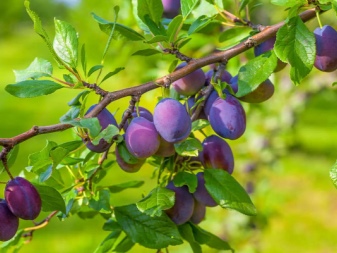
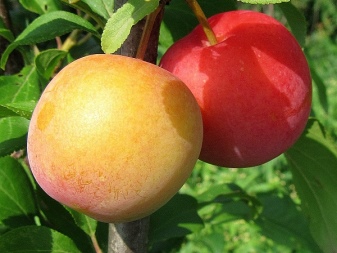
Odor differences
Cherry plum or, as it is also called a fruit, tkemali is "heard" from afar. She has a very pronounced nectar aroma, which is felt even from a relatively long distance. You can only smell the plum close up, depending on the variety, it can smell gently or have a deeper persistent smell.
Comparison of other characteristics
What is tastier? But here, as they say, there are no comrades for color and taste. Let us consider in more detail the characteristics of the fruits - after it is possible to distinguish these fruits, everyone will draw a conclusion for themselves.
Taste
Cherry plum has a sour-sweet taste, more juicy, so more jam is made from it. But for thick jams and jam it is better to take a plum: firstly, it is sweeter (9-17% contains sugar), and secondly, the denser structure of the pulp and skin is more suitable for a thick consistency. Tasting experiments gave the following results:
- the taste of cherry plum was estimated at 4-4.8 points;
- the taste of plum fruits is slightly higher - 4.5-5 points.
They took a five-point rating system as a basis. There is more sugar content in plum pulp, but cherry plum is more rich in calcium and various acids (ascorbic, citric, malic). Let us consider in more detail the chemical composition and nutritional value of the fruits.
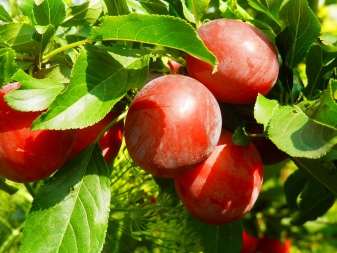
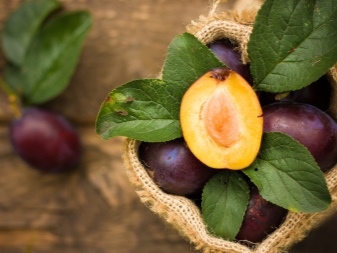
Chemical composition
In terms of their chemical composition, the fruits under consideration differ significantly, as well as in nutritional value. So, tkemali is more caloric: eating 100 g of cherry plum, you will replenish your body with 49 kilocalories. While eating the same amount of plums, you will get 15 kcal less. In cherry plum, there is much more protein (0.8 g, in plums - 0.2 g), it is more fatty (0.3 g versus 0.1 g in a “relative”). The amount of carbohydrates is also higher in yellow fruits (9.6 g and 7.9 g in plums).
Cherry plum is not only more high-calorie than plums, but also more saturated with vitamins (ascorbic acid, group B, vitamins A and PP), minerals. So, it contains a lot of potassium, iron, phosphorus, magnesium, pectin. But the plum contains iodine, nickel, zinc.
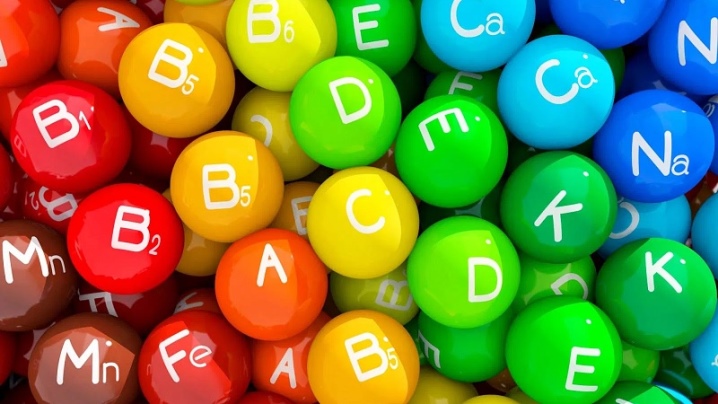
Application
Traditionally, these fruits are used in cooking, in addition to preserves, marmalades, various jams, compotes, juices and fruit drinks are prepared from them. Moreover, drinks are harvested both for the winter, so they are also boiled from fresh fruits. Piquant sauces are also prepared from cherry plum and plum pulp - these original additives are perfect not only for pancakes and pancakes, but also for meat, fish, vegetables.
Fruits are also subject to freezing, but only plums are served for drying. Dried fruits (prunes) and candied fruits are made from it. Cherry plum is not suitable for drying, its bone does not come off well, and the pulp is very juicy, even watery. Cherry plum is used to make marmalade and marshmallow. However, the range of application of cherry plums and plums does not end there. For example, in cosmetology, oil is made from plum seeds. It is used against dryness of the skin, to increase elasticity, remove flaking, and rejuvenating procedures.
Ripe plum is a raw material for creating pleasant notes in perfumery and cosmetics. But cherry plum seeds are processed to obtain activated carbon. From unripe tkemali, citric acid is made, an essence that is subsequently used in the production of sweet soda water and various concentrates in the form of syrups.

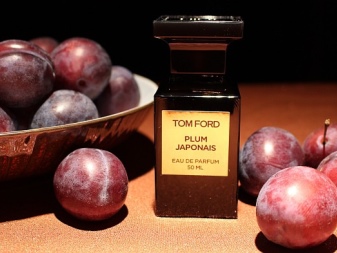
Well, and where without traditional medicine. Decoctions and infusions of these fruits are considered good hair rinses. After such a procedure, the hair becomes more flexible and "alive", shines and does not electrolyze. In addition, cherry plum is recommended for the following diseases:
- hypertension (and arrhythmias) to normalize blood pressure;
- colds when there is a strong cough (relieves inflammation);
- problems with the gastrointestinal tract (constipation, stool disturbance, stops the development of putrefactive processes in the intestine);
- when low hemoglobin (has a beneficial effect on the processes of hematopoiesis).
Plum is no less useful. It is recommended to improve well-being in the following cases:
- with swelling to remove excess fluid from the body;
- with processes of reduced vision;
- when metabolism is disturbed;
- to normalize the functioning of the kidneys and liver;
- in the fight against viruses to strengthen the immune system.
It is believed that these related fruits have a calming effect on the body as a whole and help fight cancer cells.
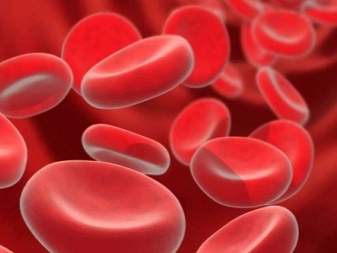
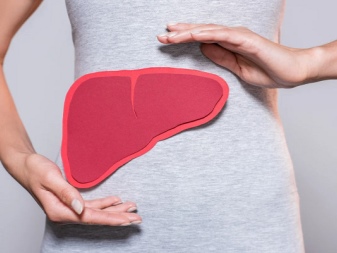
Ripening terms
Cherry plum does not like the cold, so it grows and ripens better in the southern regions. Fruiting only by the end of summer, some varieties give a harvest in early autumn. The culture is thermophilic and with strong immunity, not picky about watering and soil. The tree easily copes with diseases, can resist parasites, the main condition is to grow in warmth. But plum is quite resistant to cold weather, therefore it is suitable for growing in northern latitudes. Plum copes with low temperatures, but is not as immune resistant as tkemali.
She needs good care: watering and protection from pests and diseases. If you take care of the plum properly, it will reward you with fragrant fruits by July. The cherry plum tree bears more fruits, one small plant, growing in a favorable environment, can yield up to 40 kilograms of harvest. While the same plum tree will give half the fruit. But they will be larger.
It is clear that in the northern regions, the ripening time may shift, but only slightly - it all depends on the onset of warmth.

Origin
Both cherry plum and plum belong to the Pink family, but cherry plum is still a type of plum (cherry plum), by the way, another 249 species are included in the plum genus, but none of the varieties grows in the wild. Until recently, gardeners on their plots preferred to grow more plum trees - this is a more familiar crop for all generations.
And when cherry plum was bred as a variety of plum, the views of many changed, since it has established itself only from the best side: it bears abundantly and, by the way, begins to yield two years earlier than the plum seedling. Cherry plum lives almost twice as long as its progenitor - up to half a century, while the life span of a plum tree is a maximum of 25 years, of which it bears fruit for 10-15 years.
It is believed that the plum was first grown in Ancient Persia; it came to the territory of Russia around the 17th century, when several plum saplings were brought from Europe to Izmailovo. They were protected in the winter, because those varieties were not so winter hardy. Subsequently, Russian scientists-breeders worked hard to obtain frost-resistant varieties of plums, and this work was successfully done. Today this crop is considered cold-resistant and is actively planted even in the northernmost regions.
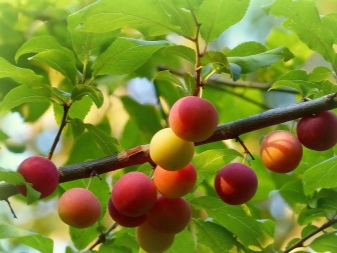
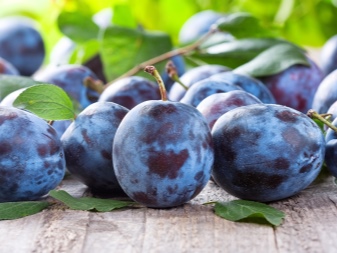
What is better to plant?
But what is better to plant - it depends, first of all, on the region. Tkemali is a thermophilic plant, therefore, it will show itself better in the southern area. Although, if it is wrong to care for it or to violate the planting technology, then in the south, cherry plum shoots will not develop properly. Plum is not so picky, moreover, it has a high degree of frost resistance, which allows it to be grown even in the North. However, it also shows itself well in warm climatic conditions. It is worth saying that certain varieties of cherry plum also withstand frosts down to -20 degrees.
When choosing what to plant in your garden: cherry plum or plum, proceed from which tree you want to see. Cherry plum will grow as a bushy tall plant, and plum will grow as a spreading tree. Well, what kind of fruits do you want to have more: if juicy, fragrant and tender, then this is tkemali, and if you want to get more fleshy fruits for jams and marmalades, plant a plum. However, you will not go wrong if you plant both cherry plum and plum on your site. In warm climates, both of these trees will perform well and give high yields. True, the plum tree will quickly please with its fruits, this is a summer fruit.
Depending on the variety, plum fruits ripen in June-July. But cherry plum only by the end of summer can please with ripe fruits, but most often it ripens and is filled with the necessary juiciness only by autumn. By the way, plum fruits are more suitable for transportation, so if the goal is to grow a crop for sale, then give preference to these fruits with a denser fruit skin. Growing a plum tree is more difficult than growing a cherry plum. The latter adapts faster when planting, but the plum has a less strong immunity, it needs constant care: feeding, watering and treating from parasites and diseases.
Near the plum seedling, you need to constantly dig up the soil in order to remove the root shoots. Cherry plum and plum are related crops, and these stone fruits have similar characteristics, but when choosing a crop for planting, it is better to take into account the differences. And remember, a good strain isn't everything. The attitude to the plant is very important, its features and initial characteristics must be taken into account. And yes, cherry plum needs a pollinator, and its older "relative" is capable of self-pollination. Cherry plum will harvest in the second year after planting, and plum - only in the fifth.
Be prepared for the fact that the cherry plum will need to be propped up, otherwise thin branches may break from a bountiful harvest. If you have little space on the site, it is better to plant a plum - this is a more neat growing tree. Instead of one cherry plum, 2 plum trees may well grow.
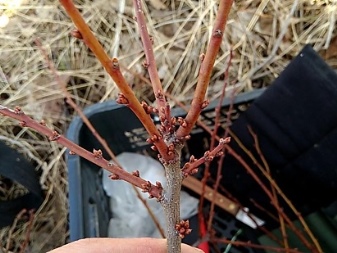












The comment was sent successfully.